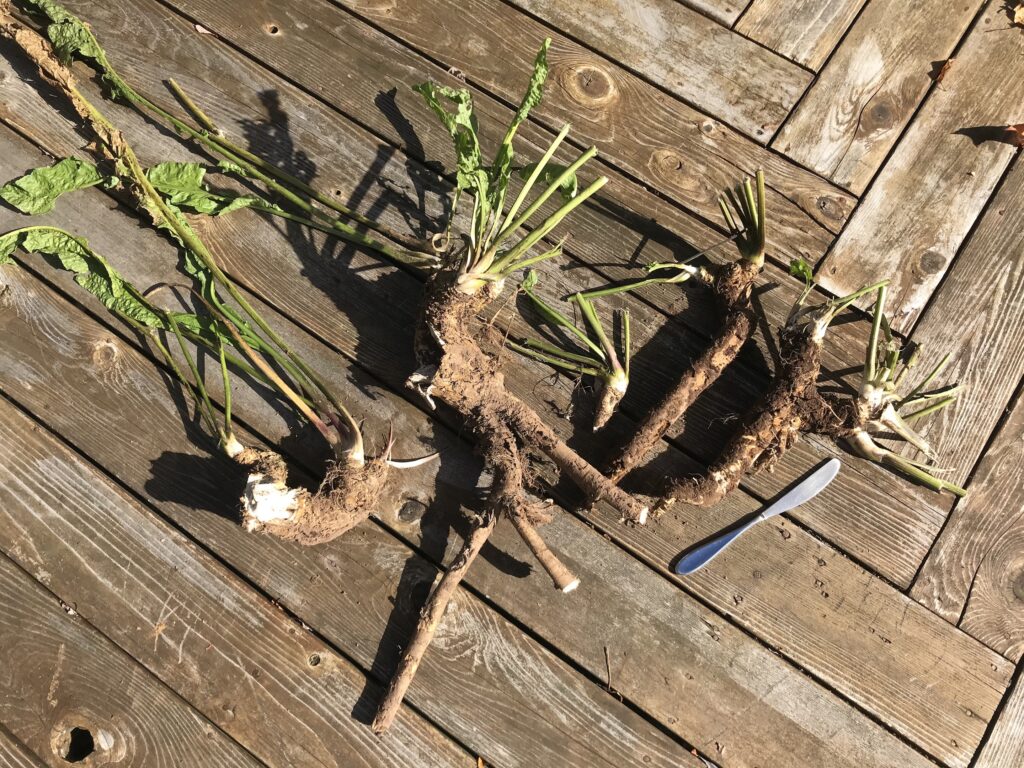
Horseradish is a spicy root of the Brassicaceae family of vegetables (that includes mustard, wasabi, broccoli, cabbage, and radish), that looks rather like a white, gnarled parsnip. The roots run deeply into the ground and the edible leaves that are bigger than rhubarb leaves, but long and thin instead of round, can grow to four or five feet in height. It’s easy to take credit for a huge horseradish crop, but the reality is that you can never really be rid of it. Once you try digging it up out of the ground, you realize that it’s tentacle-like roots travel far and wide around your garden, so you have to stop digging at some point. Whatever root is left is sure to pop out of the earth and produce leaves the following year. If you like spicy food, it’s a really easy crop to grow because of the low maintenance, frost resistance and it’s prolific growth rate. Hot peppers are much fussier than this hardy root.
Horseradish is most commonly found in a sauce with vinegar, but vinegar plus horseradish seems a little excessive: do we really need to suffer that much? I don’t. You can make it a little gentler on the palette by grating it into a condiment like mayonnaise or ketchup, or soups, or finely grating it into a hollandaise to put over eggs for a spicy benedict. It also goes well in a creamy butter sauce for venison or steak.
Store unwashed horseradish root in the vegetable drawer of the fridge. Once washed and grated, it should be put into vinegar to preserve it, but it must be used within six weeks.
Horseradish root is high in fiber; said to improve digestion and metabolism and contains a variety of nutrients like calcium, potassium, folate and Vitamin C.
When I was 18 and lived in Vienna, you could have a choice of mustard or horseradish served with your wurst. The waiters would dash over to a counter where a root was waiting, and they would grate the fresh horseradish on demand. What an eye-watering thrill! We did have a horseradish plant here on the hill years ago. My husband managed to kill it by mowing it down repeatedly. I wonder if I can plant a top for next year’s harvest?
You probably could dig up what your husband mowed over because you can never really get rid of it!
I wish! That was 27 years ago! I assure you: it’s long gone.